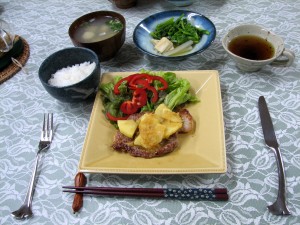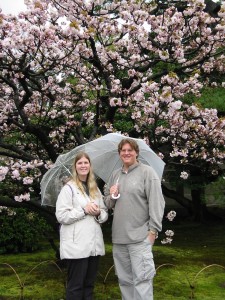The Rice Cooker Chronicles — “Kaijo!” by Justin Maki
The Rice Cooker Chronicles is a series of essays by JETs and JET alumni on the theme of cooking/eating and being alone in Japan. The brain-child of JETwit founder Steven Horowitz (Aichi-ken, Kariya-shi, 1992-94) (and inspired by the book Alone in the Kitchen with an Eggplant), this series is curated by L.M. Zoller (CIR Ishikawa-ken, Anamizu, 2009-11), the editor of The Ishikawa JET Kitchen: Cooking in Japan Without a Fight. A writer and web administrator for The Art of Japan: Kanazawa and Discover Kanazawa, ze also writes I’ll Make It Myself!, a blog about food culture in Japan.
New submissions always welcome. Just e-mail it to jetwit [at] jetwit.com.
******
Kaijō!
by Justin Maki (ALT Osaka-fu, 2002-06), a writer and editor currently working at the Sports desk of Kyodo News America in New York City. Justin’s short fiction, poetry, and essays have appeared in a handful of small journals. Contact him at makij408@gmail.com.
“When you go to the kitchen to prepare dinner, be born in the kitchen. When you finish there, die. Then be born at the dining table as you eat your dinner and, when you finish eating, die there. Be born in the garden, and sweep with your broom. When you get into bed at night, die there. And when daylight comes, and you awaken in your bed, be born anew.”
The Rice Cooker Chronicles: “My Rice Ball World” by Meredith Hodges-Boos
The Rice Cooker Chronicles is a series of essays by JETs and JET alumni on the theme of cooking/eating and being alone in Japan. The brain-child of JETwit founder Steven Horowitz (Aichi-ken, Kariya-shi, 1992-94) (and inspired by the book Alone in the Kitchen with an Eggplant), this series is curated by L.M. Zoller (CIR Ishikawa-ken, Anamizu, 2009-11), the editor of The Ishikawa JET Kitchen: Cooking in Japan Without a Fight. A writer and translator for The Art of Japan: Kanazawa and Discover Kanazawa, ze also writes I’ll Make It Myself!, a blog about food culture in Japan.
New submissions always welcome. Just e-mail it to Leah at jetwit [at] jetwit.com.
******
“My Rice Ball World”
by Meredith Hodges-Boos (ALT, Ehime-ken, 2003-2005). Please visit http://meredithhodgesboos.blog.com/ for more essays on her time in Japan and current literary projects.
I dragged my tired body into the entryway and found just enough energy to pry off my shoes. The door rattled on the track as I slumped into the main room of the house my husband and I shared as Assistant Language Teachers. “I’m home,” I muttered to Greg and I blinked into the bright light of the room. The glare and blare of the used Playstation we’d bought at Hard Off lit up the tatami in a rainbow of colors.
JQ Magazine: JQ&A with Peelander-Yellow of Alien Punk Band Peelander-Z

Peelander-Yellow, center: "I don't care about Band!!!!! We never 'play' music!!!!! We just want to 'play' with youuuuuu!!!!! Come to see our show then check it yourself!!!!!!!!" (Whitney Lee)
By Justin Tedaldi (CIR Kobe-shi, 2001-02) and Vlad Baranenko (Saitama-ken, 2000-02) for JQ magazine.
Psychedelic, seizure inducing, and fantastically successful in their ability to cause absolute sensory overload during their intergalactic performances, Peelander-Z is back. The colorful Japanese punk group hailing from the Z area of Planet Peelander returns to New York City (where it formed in 1998) for their latest tour behind their new album Super DX Hitz.
Those yearning for their Peelander-Z fix will have the opportunity to experience all the colorful mayhem at the Bowery Poetry Club on Oct. 22. In this exclusive interview, we interrogate Peelander-Yellow to reveal the deepest secrets of their cosmic travel, their mastery of the chaos theory, and what the future holds for the ongoing kaiju saga.
Tell us about Peelander-Z’s Super DX Hitz album.
You can hear our all Hitz songs and understand Peelander-Z world!!!!!!!
28 happy songs and 5 Karaoke DVD!!!!
Get it for your Mom, because your Mom wants dance with youuuuuuuuuu and Peelander-Z!!!
How do you come up with the themes for your songs?
All ideas come from my sweet yellow brain when I eat medium rare S.T.E.A.K., Tacos, Ice Cream~~~~~!!!!!
What inspired you to form the band?
I don’t care about Band!!!!!
We never “play” music!!!!!
We just want to “play” with youuuuuu!!!!!
Come to see our show then check it yourself!!!!!!!!
Who is Peelander-Yellow and what’s his story?
I’m not Peelander-Red!
I’m not Peelander-Green!
I’m not Peelander-Pink!
I’m not Peelander-Black!
Yes, I’m Peelander-Yellow for youuuuuuuu!!!!!!
I was born from Banana on Planet Peelander!!!!!
That’s why I love it!!!!!
Please bring it for meeeeeee!!!!!
**************
The Rice Cooker Chronicles is a series of essays by JETs and JET alumni on the theme of cooking/eating and being alone in Japan. The brain-child of JETwit founder Steven Horowitz (Aichi-ken, Kariya-shi, 1992-94) (and inspired by the book Alone in the Kitchen with an Eggplant), this series is curated by L.M. Zoller (CIR Ishikawa-ken, Anamizu, 2009-11), the editor of The Ishikawa JET Kitchen: Cooking in Japan Without a Fight. A writer and translator for The Art of Japan: Kanazawa and Discover Kanazawa, ze also writes I’ll Make It Myself!, a blog about food culture in Japan.
New submissions always welcome. E-mail us at jetwit [at] jetwit.com.
**********
“Nattode”
By JQ magazine editor Justin Tedaldi (CIR Kobe-shi, 2001-02). Visit his Examiner.com page for related Japanese culture stories.
I’m at a restaurant that bleeds sophistication. Seated across from me is a stunning member of the opposite sex, joining me for the sole purpose of sampling the house’s signature dish, a personal favorite of mine.
Tender music swells in the background. The lighting is perfect, with the glow of candlelight on the table framing my partner’s irresistible charms as a celebrated bon vivant holds court four tables over. Spirits are high, and we’re high on spirits. The mood is ripe.
I snap my fingers to cue the waiter, who gracefully sets two silver trays before us. “Enjoy,” he says dryly. I look him straight in the eye and grin, signaling as I have many times before that I fully intend to.
It’s time. Gloved hands raise the lids, revealing…a small pair of Styrofoam trays with thin sheets of plastic on top. My date is puzzled.
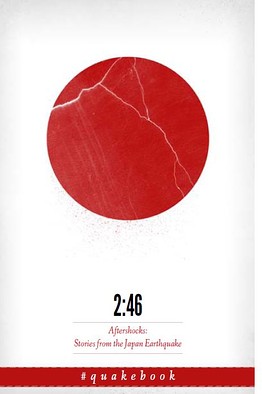 Fukushima City JET Brent Stirling recently put out word to JETAA chapters about Quakebook, “a book of stories, art and photographs that reflected first person accounts of the disaster” which will soon be available on Amazon.com with all proceeds going to benefit the Japan Red Cross. Brent contributed his own story and has also offered to help with marketing and spreading the word. Below Brent provides some insight into the unique process that led to the creation of of the project as well as his own involvement.
Fukushima City JET Brent Stirling recently put out word to JETAA chapters about Quakebook, “a book of stories, art and photographs that reflected first person accounts of the disaster” which will soon be available on Amazon.com with all proceeds going to benefit the Japan Red Cross. Brent contributed his own story and has also offered to help with marketing and spreading the word. Below Brent provides some insight into the unique process that led to the creation of of the project as well as his own involvement.
I lived in Fukushima City from August 2006 to August 2010 and worked as an ALT there. The recent earthquake, tsunami and nuclear crisis in Tohoku has had me glued to my computer since it began, as has probably been the case with all JET Alumni. Keeping in contact with my friends in Fukushima-ken through Facebook and Twitter, I felt helpless as far as how to help and what to do.
With limited access to news in the first days after the quake, I compiled information from friend’s Facebook status updates, Twitter and a variety of news sources. I sent these updates via Facebook to my friends who didn’t have the time to comb through the news in order to get an accurate picture of what was going on. Updates included news about transportation, gas, areas with running water, wind directions, reactor conditions and radiation levels. Facebook became a source of news for everyone in the prefecture. The current and former Fukushima JET community along with Japanese people worked together in order to get a clear picture of what was going on in Fukushima.
A week after the earthquake, I was sent a link to a blog asking for contributions about the earthquake. The blogger, OurManInAbiko, hoped to create a book of stories, art and photographs that reflected first person accounts of the disaster. He vowed to edit all the submissions and donate all of the proceeds to the Japanese Red Cross. Looking to help anyway I could, I put in a submission about my experience in Canada throughout the ordeal and how proud the JETs and Japanese community had made me throughout the crisis. My submission discusses sensationalism in the media and how the JET community worked together using social media to overcome adversity and share accurate news on the situation as it unfolded. I didn’t know that within 15 hours, OurManInAbiko had received 74 eyewitness submissions from all over Japan, as well as reactions from elsewhere in Asia, Europe and North America.
Through Twitter, the idea of #Quakebook grew. Just as the Fukushima-ken JETs had used social networks in order to keep in contact, #Quakebook was using the networks in order to promote and create a book. People joined in to spread the word and help with the logistics of publishing a book of this magnitude in such a short span of time. Soon after, writer, William Gibson wrote a piece for the book, then Jake Adelstein contributed, Yoko Ono has recently come on board, offering her own piece in Japanese and English Through the work of so many on Twitter from all over the world, #Quakebook began to take off. Articles appeared on the BBC website, the Wall Street Journal and CNN Go to name a few. Amazon has agreed to publish the book, waiving all of their fees with 100% of the money going to the Japanese Red Cross. The all-volunteer team of #Quakebook is now working at getting translations of the book into different languages so that it can be a truly worldwide phenomenon.
The group that comprises the Quakebook team is continually growing. Every person involved is using their skills and their own contacts in order to get the word out to every corner of the globe. The team, while working closely is completely anonymous as everyone is referred to by their Twitter names. My role has been very small throughout the Quakebook marketing process, but I believe in the book and I think it has the potential to bring people who are otherwise removed from the situation in Japan closer to it. In buying the book, not only are people making a donation to the Japanese Red Cross, but they’re also getting the stories of the people involved, the people that this disaster has affected.
I know that all JET Alumni are tied to Japan the same way that I am. Everyone’s time in Japan had a profound affect on where they are now and what they’ve done with their lives. I’m hoping that this connection to Japan will get JET Alumni Associations worldwide to support and promote this book as best they can. By putting a link to the Quakebook website on your blog, printing Quakebook posters for around your neighbourhood or your local library or getting it into the media wherever you are, everyone can make a difference in this project and help with the relief efforts in Japan.
- Pre-order the book at www.quakebook.org
- Excerpts from Quakebook
- Brent’s re-work of his submission
JetWit and the JET alum community want to know how JETs in all parts of Japan are doing in the wake of the earthquake, tsunami and radiation issues.
- Has your life been uprooted?
- Have things returned to some sort of normality? Are you still teaching every day?
- Has the radiation issue affected you or influenced any of your decisions?
- Have you moved to another part of Japan? Or left Japan?
- Are you involved in volunteering, fundraising or other disaster support activities?
- Are you housing JETs or evacuees?
- What’s next?
Whether dramatic or mundane or something in between, we want to hear about it. Please share any responses in the comments section of this post. Or feel free to email jetwit [at] jetwit.com.
Yoroshiku onegaishimasu and hope everyone is getting on ok.
—Steven Horowitz (Aichi-ken, Kariya-shi, 1992-94)
Brooklyn, NY
Cooking in Japan: Share your stories!
Update: See submitted stories further below in this post! Additional ones will be added as received. So keep checking back.
I learned recently from our friends at the free Japanese weekly Shukan NY Seikatsu that “food” is the leading driver of tourism to Japan from the U.S. these days. With that in mind, I thought it might be helpful (not to mention oishii and natsukashii) if the JET and JET alum community were to share personal anecdotes about cooking while living in Japan.
- E-mail responses to Steven at jetwit [at] jetwit.com.
- Please make sure to include your prefecture, city/town and years on JET in the following format: Steven Horowitz (Aichi-ken, Kariya-shi, 1992-94)
- Responses can be as short as once sentence and as long as 5 paragraphs. (*If you want to write something longer, that’s great too. I just suggest checking with me first to get on the same page before spending a lot of time and effort writing.)
- Responses will be aggregated into one easy-to-read post.
- Yes, this is one more project intended to help boost the “return on JET-vestment” for local governments as well as for Japan on the whole.
Itadakimasu!
***********
Stories of Cooking in Japan
Stories from the JET-Tourist Tally Project
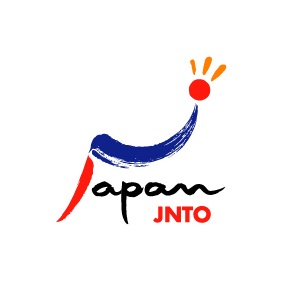 Below are approximately 150 comments received so far as a result of the JET-Tourist Tally Project. First the Top 10 Comments followed by all comments organized according to prefecture. (Click here for the latest totals from the JET-Tourist Tally Project.)
Below are approximately 150 comments received so far as a result of the JET-Tourist Tally Project. First the Top 10 Comments followed by all comments organized according to prefecture. (Click here for the latest totals from the JET-Tourist Tally Project.)
Important: If you have not yet responded, please help out by entering your JET Tourist-Tally information in the Google Form we’ve set up. And of course feel free to share any comments or stories! Every response matters. CLAIR, MOFA, JNTO and the prefecture governments are all paying attention to the results.
**********
The Top 10 Comments from the JET-Tourist Tally Project
(FYI, the comments were evaluated on the basis of “omoshiroi” plus effectiveness at demonstrating the value of JET.)
I took my parents up through Tohoku to experience a part of Japan tourists typically don’t see. We hiked Yamadera, shot over to Sendai and Matsushima, went to Hiraizumi, traveled through Aomori up to Sapporo, went over to Onuma Park, down to Hakonodate, and then down to Aomori for a few more days. They loved all of our experiences, from using an onsen and sleeping in a ryokan to learning how to order their own food. My father particularly loves to tell the story about a tiny yakiniku restaurant we stumbled into in Hiraizumi. The owner couldn’t speak English, but he did know at least one word. He came over to my father, put a beer down and said “suds.” From that point on, they were friends. A Buddhist monk sitting a few tables over joined us and invited us to visit his temple the next day. It was an amazing intercultural experience in an ancient town usually overlooked by tourists.
-Abigail McBain (Aomori-ken, Ajigasawa-machi, 2004-06)
My family said they never would’ve thought to visit Japan before I did JET, and since visiting twice couldn’t believe they ever said that because they had the most amazing time. Especially memorable was the opportunity to see village life in Japan and experience Japanese hospitality, something regular tourists rarely get to experience.
-Kirsten Jones (Tokushima-ken, Tsurugi-cho, 2005-07)
My parents still talk about the experiences they had visiting me in Japan. My father in particular. As a result he still maintains links to Japan and often buys tea directly from a Japanese seller near Uji named Hibiki-an. I myself have returned to Japan as a tourist three times since I finished the JET Programme, one time with a fellow JET alumna, staying 10 days each time. I plan to visit Japan again. I also often encourage my American friends who are interested in visiting Japan to go. One of my co-workers recently went there on vacation, again for about 10 days, and had a wonderful time.
-Rose de Fremery (Shizuoka-ken, Hamaoka-cho, 1998-2001)
Being able to share a country that I love (Japan) with people that I love (my family) was one of the best experiences of my life. My mother still talks about coming to visit me for those two weeks. We were able to explore my town (Hamamatsu) and also Tokyo, Hiroshima and Kyoto. In addition, this was the first time my mother had ever left the United States; she is amazingly proud to say she became a world-traveler when she was in her 50s! This would not have happened if I had not been a JET participant and could confidently share parts of Japan with my family.
-Jennifer Butler (Shizuoka-ken, Hamamatsu-shi, 2001-04)
Both of my visitors were and still are keen practitioners of aikido. They continue to teach the martial art and will be regular visitors to Japan, also inspiring others to travel there. Without my JET experience I wouldn’t have been able to take them to Japan. Also, I am now a British Airways pilot flying regularly to Tokyo so I could perhaps list a figure of several thousand visitors!
-Darren Tostevin (Fukuoka-ken, Omuta-shi, 1990-91)
Prior to my becoming an ALT, my fiance had never had any interest whatsoever in visiting Japan. It was only once I went there and started to tell her about the people I had met that she began to read more and educate herself about the country. When she finally came to visit me, she was constantly amazed at how genuinely welcoming and helpful everyone was as well as how easy it was to get around and experience everything that Japan has to offer. To this day she still tells everyone about her experiences there and how Japan went from the bottom of her “Places to Visit” list to become her favorite country that she’s ever visited. Not only did the JET Programme give my family and friends an amazing opportunity to see what Japan has to offer but it also converted someone who never had given the country a second thought into a vocal volunteer tourism spokeswoman.
-Gregory Blair (Nagasaki-ken, Saikai-shi, 2007-08)
I made sure to show two of my guests around Niigata, which is not your typical tourist destination–and they loved it even more than Kyoto! Having JETs in locations off the beaten track surely helps those areas.
-Maureen O’Brien (Niigata-ken, Niigata-shi, 2006-08)
Several of these visitors (at least 5) had previously stated absolutely no interest in visiting Japan…it took quite a bit of convincing on my part to get these individuals to come. In the case of one, a senior citizen friend from England, it just seemed so un-knowable and far beyond her comfort zone. But she loved it once she arrived. The other four, a Philippine-American family who are friends here in the US, were previously very anti-Japanese due to experiences their grandparents’ generation suffered during WWII. They couldn’t understand how I would possibly want to move to Japan on JET. But they kept in touch the entire two years, and finally – just one month before I returned – they agreed to come for a visit. They fell in love with the people and the country, their prejudices were totally erased. Even now, three years later, they are still talking about Japan…only now it is in terms of how wonderful and warm the people are and how we should all live up to these standards of hospitality. A total about-face!
-Margie Banin (Kochi-ken, Motoyama-cho, 2005-07)
My parents would never have dreamed of visiting Japan had I not been there. Now they are complete Japan enthusiasts and are really interested in the country and culture. My friends who came to visit still talk about it now and pass this on to other people, encouraging others to visit Japan. Also, thanks to my stories, pictures and news from the two years I spent in Japan, my whole network of friends and family have shared my interest in the country. I also organised letter exchanges with my old high school, and at least 20 students has direct contact with Japanese students at my school in Yakage-cho, and have become Japan enthusiasts.
-Annie Barber (Okayama-ken, Yakage-cho, 2007-09)
I had heard about all sorts of difficulties vegetarian ALTs had settling in to Japan, so I was a little worried when a vegetarian friend of mine came to visit. After five days of my drilling her with phrases that would help her order meat-free food, she and her companion ventured off to Kyoto, Osaka and Hiroshima for a week. They had no problems and were really impressed with how the restaurants were able to cater for her special dietary requests. They were also really impressed with the variety of food offered (tofu, seasonal / mountain veggies, tempura, etc.) that were appropriate for vegetarians. Another example of excellent service in Japan, going that extra mile to satisfy the customer! (On another side note, I’ve been pining for a visit back to Japan since I left and have managed to persuade my family to come with me after Golden Week this year. Assuming everyone can make it, that will be another 4 people spending a total of 48 days tourist travel in Japan!)
-Martin McCloud (Niigata-ken, Tokamachi-shi, 2004-09)
***********
Stories from the JET-Tourist Tally Project
(Organized by Prefecture) Read More
WIT Life #129: Maui Manju and other Hawaii discoveries
WITLife is a periodic series written by professional Writer/Interpreter/Translator Stacy Smith (Kumamoto-ken CIR, 2000-03). She starts her day by watching Fujisankei’s newscast in Japanese, and here she shares some of the interesting tidbits and trends together with her own observations.
I find myself lucky enough to be finishing my current interpreting assignment here in Honolulu. I head home tonight but was able to spend my last afternoon with my local JET friend, who took me to the Don Quijote behind my hotel. I was expected the kind of zakka they have in Japan, but here it is a full-fledged supermarket stocked with a plethora of Japanese and other goods!
One item I found there that I have never Read More
WIT Life #128: All’s well that ends well?
WITLife is a periodic series written by professional Writer/Interpreter/Translator Stacy Smith (Kumamoto-ken CIR, 2000-03). She starts her day by watching Fujisankei’s newscast in Japanese, and here she shares some of the interesting tidbits and trends together with her own observations.
The recent Japan/China conflict came to a resolution quicker than anticipated as it was announced that the Chinese fishing captain will be released today. He was being held in Okinawa, and a prosecutor there said, “We have decided that further investigation while keeping the captain in custody would not be appropriate, considering the impact on the people of our country, as well as the Japan-China relations in the future.” However, the case will not be officially closed in order to leave room ‘for some ambiguity that would allow both countries to save face.’ Some in Tokyo showed dissatisfaction with the decision, including conservative governor Shintaro Ishihara who claimed that Japan had caved in to Chinese pressure. Online communities in both countries were buzzing, with the Chinese side saying “Yatta!” and the Japanese side being more critical. Things may not be over yet though. Currently four employees of the construction company Fujita are being questioned by authorities in China after traveling there to prepare for a project to dispose of chemical weapons abandoned in China by the Japanese military during World War II. They have been charged with entering a military zone without authorization.
WIT Life #127: The plot thickens
WITLife is a periodic series written by professional Writer/Interpreter/Translator Stacy Smith (Kumamoto-ken CIR, 2000-03). She starts her day by watching Fujisankei’s newscast in Japanese, and here she shares some of the interesting tidbits and trends together with her own observations.
Tensions have increased between Japan and China over the former’s prolonged detention of a Chinese fishing trawler captain. In response, China has put an embargo on shipments of rare earth minerals, which are used for various manufacturing purposes such as solar panel glass and Prius motors. The conflict has escalated to the point that Chinese Prime Minister Wen Jiabao stepped in early this week to personally demand the captain’s release. Stay tuned to see how this diplomatic crisis pans out.
WIT Life #124: 自殺防止
WITLife is a periodic series written by professional Writer/Interpreter/Translator Stacy Smith (Kumamoto-ken CIR, 2000-03). She starts her day by watching Fujisankei’s newscast in Japanese, and here she shares some of the interesting tidbits and trends together with her own observations.
I just finished an interpreting assignment where our last destination was New York. One day we were returning to the hotel from an appointment and the subway suddenly stopped due to a sick passenger. My client asked what was going on and I explained, feeling like the conductor after saying “We should be moving shortly.” She made the comment that this kind of delay happens in Japan as well, but is often due to suicides. I thought she was referring to Tokyo as she is from Hokkaido, but she said that even back home it is an issue.
I was reminded of our exchange this morning when the news showed politicians promoting a spring suicide prevention (自殺防止 or jisatsu boushi) campaign called, 「お父さん、眠れてる?」 (otousan, nemureteru? or Dad, are you sleeping ok?). Not to make light of a heavy topic, but I like the design of the web page where the father and his school-age daughter are surrounded by sheep with distinctive personalities (Ms. Kawaii, Mr. Cool, etc.), as well as one peacefully at rest.
Below the tagline on the right it reads “Cabinet Sleep Campaign,” indicating that Read More
WIT Life #123: International acclaim and disdain
WITLife is a periodic series written by professional Writer/Interpreter/Translator Stacy Smith (Kumamoto-ken CIR, 2000-03). She starts her day by watching Fujisankei’s newscast in Japanese, and here she shares some of the interesting tidbits and trends together with her own observations.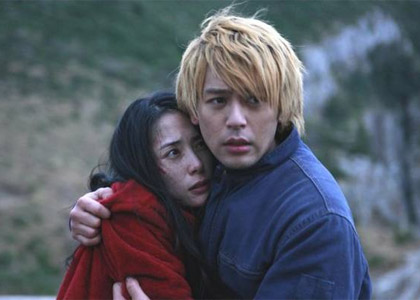
I was really happy to hear that Eri Fukatsu (37) won the best actress award at the 2010 Montreal World Film Festival for her performance in the Japanese film Akunin (Villain). It also features Satoshi Tsumabuki (29) who stars in the title role and is pictured with Fukatsu on the right. Akunin is a tragic love story based on the novel of the same title, and Fukatsu plays the part of a young woman who runs away with a construction worker (Tsumabuki) who inadvertently killed someone. It was directed by Lee Sang Il (36), and all three were in attendance at the festival. Fukatsu is the first Japanese actress to take home the trophy since 1983.
I have liked Fukatsu ever since seeing her in the 2005 drama Slow Dance, which also stars Tsumabuki who is one of my favorites. In this drama you wonder if Read More
WIT Life #122: Gaijin food and smile rankings
WITLife is a periodic series written by professional Writer/Interpreter/Translator Stacy Smith (Kumamoto-ken CIR, 2000-03). She starts her day by watching Fujisankei’s newscast in Japanese, and here she shares some of the interesting tidbits and trends together with her own observations.
Today’s news did a special investigation on the favorite foods of foreigners visiting Japan. The results were displayed in an easy-to-read pie chart which showed soba/udon at the top with 20%, sushi and yakitori tied for 18%, ramen at 13%, okonomiyaki at 9% and 22% for other. The average total amount of money spent on food per day was 3352 yen (about $40 at today’s exchange rate of 84.125 yen to the dollar), thanks to cheap, filling meals like a serving of yakisoba for 200 yen at a local matsuri. With lodging for 2500 yen per night at a hostel, this allows for a pretty cheap stay in Japan despite the current 円高 (endaka or strong yen).
This survey marked a shift from the popularity of more upscale foods like sushi to more everyday dishes like noodles. Many foreigners interviewed attributed their interest in ramen to Read More
WITLife is a periodic series written by professional Writer/Interpreter/Translator Stacy Smith (Kumamoto-ken CIR, 2000-03). She starts her day by watching Fujisankei’s newscast in Japanese, and here she shares some of the interesting tidbits and trends together with her own observations.
A wacky article from the WSJ about overnight trips between otaku and their virtual lovers to the seaside area of Atami, not far from Tokyo. Local business such as yakiniku (pictured right) and dessert shops are catering to this new clientele with special menus and promotional products, adding a bit of economic stimulus to this past its heyday region. Hotels will often charge for two (for up to $500!) despite the fact that half of the couple is virtual, and the men gladly pay. An Only in Japan story that I hope will be taken in context!

